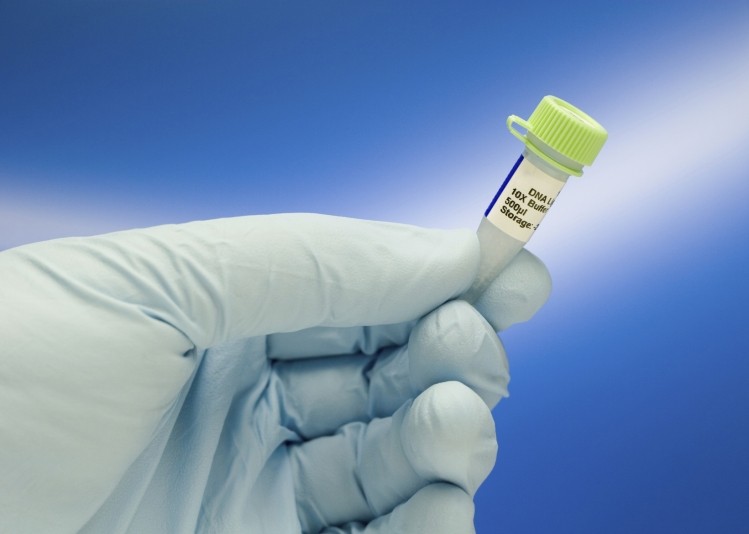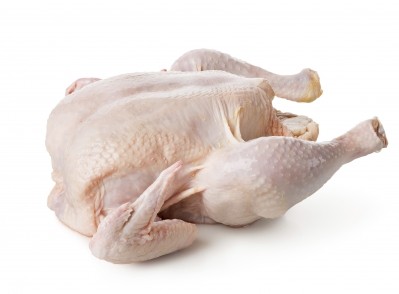War waged on contamination in ingredients

Ingredient contamination can hit manufacturers on multiple levels and have any number of sources. High-profile cases have affected food categories from red meat to red-hot spices.
It is a war fought on many fronts, and one where final victory is not likely to be declared any time soon. The good news is that an armoury of weapons to wage this war is under constant development, whether for the battle against criminal adulteration, chemical contamination or foodborne disease.
These were discussed at Food Manufacture Group’s one-day food safety conference held at the Lowry in Manchester on September 29.
Since last year, when the Elliott Review following the 2013 horsegate scandal made its recommendations, one of the areas of government policy watched most keenly by industry has been the response to the threat from food crime.
Since its creation within the Food Standards Agency (FSA), the National Food Crime Unit (NFCU) has become the focus of that interest.
Unlike many other forms of crime, food crime is notable for the almost complete lack of victim reporting, which in other areas would be the starting point for assessing the prevalence of a given crime, says Andy Morling, who was made head of the NFCU in March 2015.
“Neither consumers nor food businesses will generally be aware that they’ve been deliberately sold inauthentic or substandard food,” says Morling.
As a result, insider information and whistleblowing, provided to the NFCU in confidence, is critical to understanding and responding to the threat.
Confidence in that response was not reinforced when, in September this year, FSA chief operating officer Jason Feeney reportedly told a conference that an investigative unit within the NFCU might never be created. Instead, he suggested, those powers might stay with local authorities and the police.
The Elliott report is clear: “The new Food Crime Unit will need to develop a genuine professional investigative capability.”
Without this capability, and a director of investigations with appropriate senior law enforcement background, the unit will have “no cutting edge”, says the report, and will be shut out of joint activities with other agencies around Europe.
But while evidence of an NFCU with real teeth would be welcomed by most in the industry, no one is suggesting that the unit could ever provide any sort of alternative to increased and improved vigilance on the part of manufacturers.
Advanced genetic testing (Return to top)
In this connection, advances in the field of genetics are possibly the most exciting. At the beginning of the year, Leatherhead Food Research (now Leatherhead Research) launched its own single-test in-house method for detecting “unknown and unsuspected cases of adulteration or mislabelling” in meat.
The drawbacks with existing methods include the need for different tests for different potential contaminants, says Leatherhead. There is also a greater likelihood of false positives, it argues, when ‘pseudogenes’ are created during the process of multiplying DNA sequences. With a detection limit of 1% for each DNA target, Leatherhead’s test can be applied to cooked, raw and processed meats.
Of the existing polymerase chain reaction (PCR) techniques, research and development manager and creator of the new method Dr Angus Knight says: “They’re not always 100% right, and there have been test results which have been wholly wrong. You have to be careful.”
Research scientist Monee Shamsher says that, to date, all testing using the new method has been done in-house at Leatherhead: “It was developed here. We’ve taken techniques which were already out there and adapted them.”
“It seems to work in processed products, too, which are usually more difficult to analyse,” Knight says. It can even be applied to animal-derived gelatines in confectionery, for example, where a certain amount of degraded DNA can usually be identified.
According to Knight, the test will discriminate between different tissues of the same animal, distinctions which might be important with a product such as liver pâté.
One of the basic questions with genetic testing is: How much data do we need? But in fact, the time requirement and cost of carrying out even whole genome sequencing (WGS) has reduced to the extent that it is now being considered for even routine testing on foodborne pathogens.
It is currently, for example, being routinely used by the Food & Drug Administration (FDA) in the US across a nationwide network.
Whole gene sequencing (Return to top)
At the FSA, head of science delivery Alisdair Wotherspoon says: “We are at the point of asking whether this is just a research tool or something we should be actively pursuing in order to tackle foodborne outbreaks more effectively.”
Wotherspoon spoke at Food Manufacture Group’s one-day food safety conference held at the Lowry in Manchester on September 29.
For his part, Wotherspoon appears enthusiastic about active pursuit.
“WGS is much more discriminating than any microbiological tool,” he states.
“If you want to know whether different traces of salmonella, for example, are from the same source, this will tell you with near-certainty. You can probably obtain the sequence within a matter of hours, and at a cost of between, say, £50 and £100 per test; it’s in the realms of ‘Why wouldn’t you?’.”
He dismisses claims from some quarters that it is a costly ‘sledgehammer’ being deployed against some potentially easy-to-crack nuts.
The ‘sledgehammer’ argument rests on the huge amount of detail that WGS provides.
But Wotherspoon says: “You can apply this technology on different levels, so it could be used as a screening test.”
At the more detailed end of the scale, it could form the basis for a database of genome sequences.
“That database could then be interrogated for other reasons: to see how a pathogen is changing, when it actually became a pathogen, and so on,” he says. That in turn could inform improved interventions in the future.
Nor is the FSA the only advocate of the technology in the UK. Public Health England is already applying WGS, though not exclusively to food safety issues.
“Other businesses are offering the technology to the food industry, either in order to assess ingredients coming through the supply chain or in order to establish whether processing is effective,” Wotherspoon reports.
“Manufacturers could use this for routine testing,” he adds.
“But I suspect they might look at it on a risk-type basis, given the risks inherent in a given supply chain or a new supplier.” Of course, it could also be used for random sampling.
Global Microbial Identifier (Return to top)
On the database side, Wotherspoon is also on the steering group of the Global Microbial Identifier (GMI) project, which began around five years ago as an international platform for storing WGS data on a range of micro-organisms.
“It’s probably going to be a game-changer,” he predicts. “It’s extremely powerful, and evolving fast.”
Part of this evolution lies in a move out of the lab, towards the possibility of small, mobile sequencing units. And part of it is about moving from tests requiring isolated organisms to tests based on ‘dirty’ samples, he explains.
But he adds: “It’s in bio-informatics, in the IT which goes around the data, that’s where the real developments will come.”
Long-term, one objective would be to allow potential microbiological problems to be identified before specific ingredients or food entered the supply chain.
Speaking alongside Wotherspoon and Morling at Food Manufacture’s food safety conference was Matthew Sharman, head of food science at the Food and Environmental Research Agency (FERA).
His focus was on ways of detecting chemical contamination in food, whether from pesticides, veterinary medicines or other sources.
Like Wotherspoon, he emphasises the importance of informatics, and the challenge of the informatics load for labs. The reason for these concerns becomes clear when he describes his area of interest.
“The work we’re engaged in is ‘smart surveillance’, in other words, technologies which measure change,” he says.
“If you can profile ‘normality’ in chemical terms and build up a database, a chemical profile, then when you detect a change, you can ask whether this is the result of a natural event, changes in processing or deliberate contamination.”
Where there is a change, this can be explained by anything from a different feeding regime in livestock to climatic events, and these need to be factored in, says Sharman.
“You can think of it as a ‘traffic light’ system, with ‘red’ signalling a step-change in the data,” he explains.
So has this ‘smart surveillance’ approach moved beyond the theoretical?
“There’s evidence that some food companies are starting to use it for easier matrix types such as liquids,” he reports.
“It is more difficult when applied to more complex foods, such as for example meat with marbling from fat.”
Morling will provide a further update on the NFCU at a London seminar on combating food fraud hosted by The Institute of Food Safety, Integrity and Protection (TiFSiP) on February 3 2016.
Watch his passionate plea for partnership to beat food and drink crime in this exclusive video interview.















